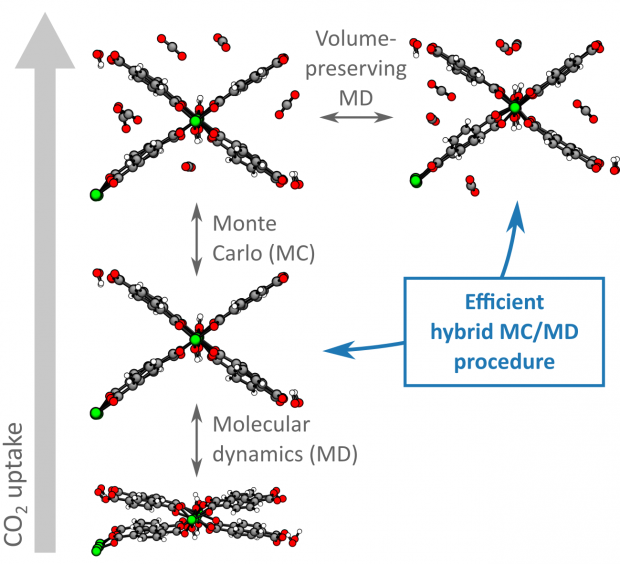Ab Initio Predictions of Adsorption in Flexible Metal–Organic Frameworks for Water Harvesting Applications
Abstract
Metal–organic frameworks such as MOF-303 and MOF-LA2–1 have demonstrated exceptional performance for water harvesting applications. To enable a reticular design of such materials, an accurate prediction of the adsorption properties with chemical accuracy and fully accounting for the flexibility is crucial. The computational prediction of water adsorption properties in MOFs has become standard practice, but current methods lack the predictive power needed to design new materials. Limitations stem from the way the interatomic potential is described and the inadequate consideration of the framework flexibility. Herein, we showcase a methodology to obtain chemically accurate adsorption isotherms that fully account for framework flexibility. The method relies on very accurate and efficiently trained machine learning potentials and transition matrix Monte Carlo simulations to account for framework flexibility. For MOF-303, quantitatively accurate adsorption isotherms are obtained, provided an accurately benchmarked electronic structure method is used to train the machine learning potential, and local and global framework flexibility is accounted for. The broader applicability is shown through the study of MOF-333 and MOF-LA2–1. Analysis of the water density profiles in the MOFs gives insight into the factors governing the shape and origin of the isotherm. An optimal water harvester should have initial seeding sites with intermediate adsorption strength to prevent detrimental low-pressure water uptake. To increase the working capacity, linker extension strategies can be used while maintaining the initial seeding sites, as was done in MOF-LA2–1. The methodology can be applied to other guest molecules and MOFs, enabling the future design of MOFs with specific adsorption properties.


 Open Access version available at
Open Access version available at 